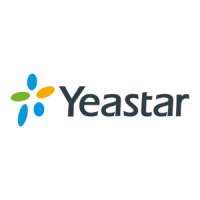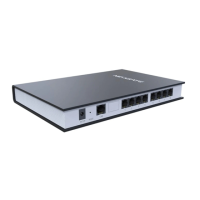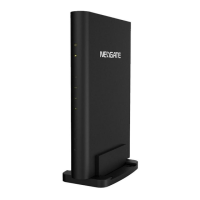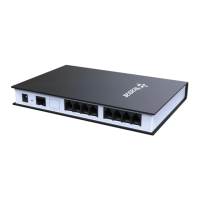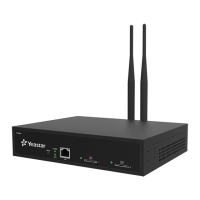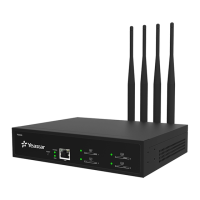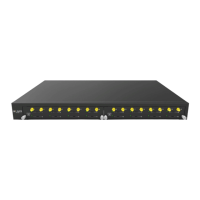TA410/810 User Manual
22/63
Table 4-5 Description of SIP NAT Settings
STUN (Simple Traversal of UDP through NATs) is a protocol for assisting
devices behind a NAT firewall or router with their packet routing.
The STUN server allows clients to find out their public address, the type of
NAT they are behind and the internet side port associated by the NAT with
a particular local port. This information is used to set up UDP
communication between the client and the VOIP provider and so establish
a call.
The IP address that will be associated with outbound SIP messages if the
system is in a NAT environment.
Alternatively you can specify an external host, and the system will perform
DNS queries periodically.
This setting is only required when your public IP address is not static. It is
recommended that a static public IP address is used with this system.
Please contact your ISP for more information.
External
Refresh
Interval
Used to identify the local network using a network number/subnet mask
pair when the system is behind a NAT or firewall.
Some examples of this are as follows:
“192.168.0.0/255.255.0.0”: All RFC 1918 addresses are local networks;
“10.0.0.0/255.0.0.0”: Also RFC1918;
“172.16.0.0/12”:Another RFC1918 with CIDR notation;
“169.254.0.0/255.255.0.0”: Zero conf local network.
Please refer to RFC1918 for more information.
Global NAT configuration for the system; the options for this setting are as
follows:
Yes = Use NAT. Ignore address information in the SIP/SDP headers and
reply to the sender's IP address/port.
No = Use NAT mode only according to RFC3581.
Never = Never attempt NAT mode or RFC3581 support.
Route = Use NAT but do not include rport in headers.
By default, the system will route media steams from SIP endpoints
through itself. Enabling this option causes the system to attempt to
negotiate the endpoints to route packets to each other directly, bypassing
the system. It is not always possible for the system to negotiate
endpoint-to-endpoint media routing.
3) Codecs
We can choose the allowed codec in TA410/810, a codec is a compression or
decompression algorithm that used in the transmission of voice packets over a
network or the Internet. For more information about codec, you can refer to this page:
http://en.wikipedia.org/wiki/List_of_codecs
